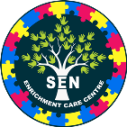
Autism Spectrum Disorder (ASD)
Children with autism mainly present with:- Persistent deficits in social communication and social interaction across multiple contexts.
- Restricted, repetitive patterns of behavior, interests, or activities.
- Symptoms must be present in the early developmental period (but may not become fully manifest until social demands exceed limited capacities, or may be masked by learned strategies in later life).
- Symptoms cause clinically significant impairment in social, occupational, or other important areas of current functioning.
(American Psychiatric Association. Diagnostic and statistical manual of mental disorders. 5th ed. Arlington, VA: American Psychiatric Association; 2013.)

Attention-Deficit/Hyperactivity Disorder (ADHD)
Children with ADHD mainly present with:
- a) A persistent pattern of inattention and/or hyperactivity-impulsivity that interferes with functioning or development, as characterized by (1) and/or (2):
-
- Inattention: Six (or more) of the following symptoms have persisted for at least 6 months to a degree that is inconsistent with developmental level and that negatively impacts directly on social and academic/occupational activities.
- Hyperactivity and impulsivity: Six (or more) of the following symptoms have persisted for at least 6 months to a degree that is inconsistent with developmental level and that negatively impacts directly on social and academic/occupational activities.
- Several inattentive or hyperactive-impulsive symptoms were present prior to age 12 years.
- Several inattentive or hyperactive-impulsive symptoms are present in two or more settings (e.g., at home, school, or work; with friends or relatives; in other activities).
- There is clear evidence that the symptoms interfere with, or reduce the quality of social, academic, or occupational functioning.
(American Psychiatric Association. Diagnostic and statistical manual of mental disorders. 5th ed. Arlington, VA: American Psychiatric Association; 2013.)

Specific Learning Disorder
Specific learning disorder (often referred to as learning disability) is a neurodevelopmental disorder that begins during school-age, although may not be recognized until adulthood. Learning disabilities refer to ongoing problems in one of three areas, reading, writing and math, which are foundational to one’s ability to learn.
Types of Learning Disorders:
- Dyslexia is a term that refers to the difficulty with reading. People with dyslexia have difficulty connecting letters they see on a page with the sounds they make. As a result, reading becomes a slow, effortful and not a fluent process for them.
- Dysgraphia is a term used to describe difficulties with putting one’s thoughts on to paper. Problems with writing can include difficulties with spelling, grammar, punctuation, and handwriting.
- Dyscalculia is a term used to describe difficulties learning number related concepts or using the symbols and functions to perform math calculations. Problems with math can include difficulties with number sense, memorizing math facts, math calculations, math reasoning and math problem solving.
(American Psychiatric Association, 2018)

Behavioral / Emotional Disorders
A condition exhibiting one or more of the following characteristics over a long period of time and to a marked degree that adversely affects a child’s educational performance:
- An inability to learn that cannot be explained by intellectual, sensory, or health factors.
- An inability to build or maintain satisfactory interpersonal relationships with peers and teachers.
- Inappropriate types of behaviours or feelings under normal circumstances.
- A general pervasive mood of unhappiness or depression.
- A tendency to develop physical symptoms or fears associated with personal or school problems.
(IDEA, 2004)
